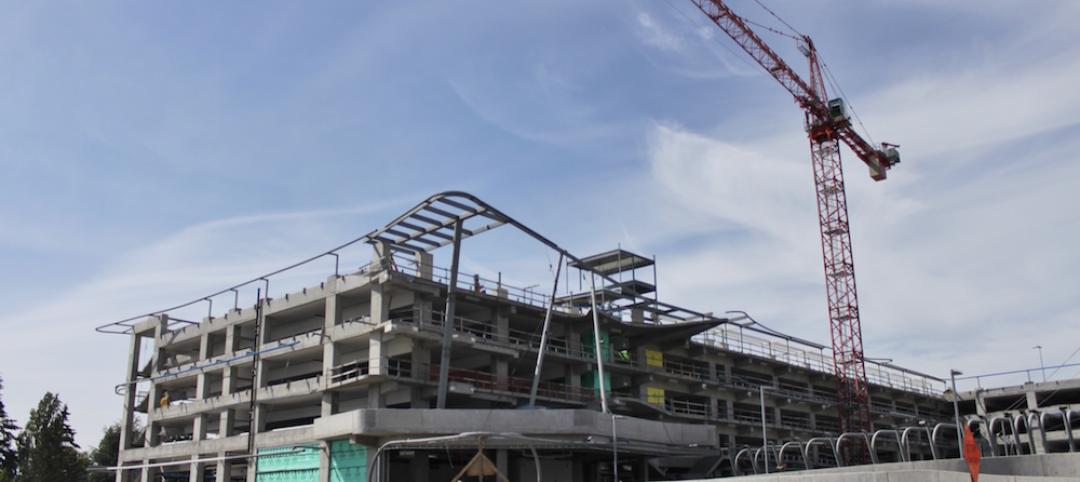Five years ago, when the net-zero energy building movement was starting to take hold in the U.S., it was unfathomable to think that budget-stretched school districts would consider investing in the high-performance systems and strategies necessary for achieving net-zero energy performance.
But coming out of the recession, still bruised and battered and in severe belt-tightening mode, school officials are beginning to take note. In the past few years, a number of net-zero or net-zero-ready K-12 school projects—both public and private—have come online. And dozens more are in the works. Rob Winstead, Principal and Director of Sustainability at SHW Group (www.shwgroup.com), estimates the number to be between 35 and 50 NZE or NZE-ready K-12 school projects nationally, with many more in the feasibility stage.
“As the economy begins to improve, we’re hearing more interest from our K-12 clients in exploring net-zero,” says Winstead, who’s firm is designing two NZE-ready schools in Texas: Pflugerville Elementary School in Pflugerville and the Richard J. Lee Elementary School in Dallas.
Why now?
It comes down to being able to predict and control costs, and eliminate volatility in utility costs for the life of the building. Next to staffing, utilities are the biggest budget line item for most schools and one of the few fixed operational costs that can be significantly reduced, or even negated. For that reason, some school officials are looking past the initial sticker shock for NZE strategies (and other measures, like retro-commissioning) and are taking a longer-term view, projecting the savings over time.
The Building Team for the Pflugerville Elementary School includes: SHW Group (architect, SE), CMTA Engineers (MEP), and Balfour Beatty (contractor).
“Our K-12 clients are being asked to provide a higher level of service—whether it’s special programs, testing requirements, or extending the school day—while their budgets are being reduced,” says Winstead. “They realize that every dollar saved on operations and maintenance costs is a dollar that can be spent for other programs.”
Getting ready for net zero
While there are a handful of true NZE schools in the U.S., notably the Living Building-certified Bertschi School Living Building Science Wing in Seattle, the staggeringly high cost of renewable energy systems prevents most school districts from achieving net-zero energy performance. Many of these owners are taking a practical approach, building highly energy-efficient, NZE-ready facilities that can be retrofitted with renewable systems at a later date.
In both of SHW Group’s NZE-ready projects, Winstead says the Building Team pushed for the inclusion of as many renewable systems as the districts could afford in the initial bid package. Having renewables not only supported the curriculum efforts, but gave the school districts skin in the NZE game, so to speak, thereby increasing the odds that they will continue to pursue their original energy goals.
“Many of these projects start out as net-zero, but the renewable systems and many of the high-performance design measures are eventually value engineered out as the budgets are scrutinized,” says Winstead. “K-12 projects are complex, with many stakeholders with different agendas.”
Having a net-zero mindset, says Winstead, changes the entire discussion about the building design and energy-efficiency strategies. All of a sudden, upgrades to the building design are not considered cost premiums, but rather cost avoidances in renewable technology.
At 150,000 sf, the Lady Bird Johnson Middle School in Irving, Texas, is the nation’s largest net-zero energy school. The school has project-based learning programs based on the facility’s energy and water systems. Four “nodes,” each with multiple digital, interactive displays, focus on solar, wind, geothermal, and water conservation. The Building Team for the Lady Bird Johnson Middle School included Corgan Associates (architect, interior designer), L.A. Fuess Partners (SE), Image Engineering Group (MEP), and Charter Builders (contractor).
“Once you have the net-zero goal firmly established, it’s not about the 20 cents of added cost per square foot for additional roof insulation; it’s about the $4 per watt we’re avoiding on the renewable side,” he says.
The goal, says Winstead, is achieving a building energy use intensity of 20 kBtu/sf/year or better—roughly one-fourth the energy use of the average K-12 building. That’s the threshold where the first cost for renewable systems is within reach for some school clients.
“Even if they delay—or cancel—the renewable purchase, they end up with a building that has a fraction of the utility demand,” he says.
Using net-zero as a teaching tool
Schools are able to further justify the upfront investments for NZE strategies by incorporating the lessons and data from the building systems into the curriculum. In fact, this “living lab” approach is often the “secret sauce” for winning over the many stakeholders on the idea of net-zero.
The 150,000-sf Lady Bird Johnson Middle School in Irving, Texas, which opened in fall 2011 as the nation’s largest net-zero energy school, has project-based learning programs based on the facility’s energy and water systems. Four “nodes,” each with multiple digital, interactive displays, focus on solar, wind, geothermal, and water conservation.
At the Pflugerville school, a centralized “discovery zone” will house the library, gym, and cafeteria and will feature digital, interactive displays and temporary exhibits demonstrating how the building’s systems and sustainable features are performing. Other projects incorporate small, ground-level photovoltaic installations and exposed infrastructure so students can get up close and interact with the systems.
As more NZE school projects come online over the next five years, the question becomes: Is net-zero energy a more logical approach for school districts than a holistic green building? Some school districts see NZE as a win-win—they get enhanced educational programming while greatly reducing utility expenses.
Related Stories
Building Team | Jul 11, 2016
Design-assist: The way to really fly [AIA course]
Experts explain the benefits of DA, a process where the subcontractors are retained to assist other Building Team members in the development of a design. Earn 1.0 AIA CES learning units by reading and taking the exam.
Building Team | Jul 11, 2016
Addressing client concerns about design-assist
Common concerns about DA include lack of familiarity, obtaining competitive pricing, and design liability.
Sponsored | Building Team | Jul 11, 2016
Construction Disruption at AECX: Technology, hackathons and the promise of change in LA
The lead up to AECX featured a discussion providing insight into the current state of the AEC technological revolution by exploring opportunities, challenges and choices AEC pros face.
Green | Jul 1, 2016
Perkins Eastman pledges to use EDGE green building system for five upcoming international projects
The firm will partner with the International Finance Corporation to promote sustainable building in emerging markets like India and China.
Healthcare Facilities | Jul 1, 2016
AIA releases summary of the 2016 Design and Health Research Consortium
Consortium members discussed how architects, designers, and health professionals can best apply design and health research in their communities.
Architects | Jun 30, 2016
The year's best small projects include a floating sauna, dental trailer, and smocked porch
AIA chose the 2016 recipients of the Small Project Awards. Every entry cost less than $1.5 million to build, with one as low as $900.
Architects | Jun 29, 2016
AIA: Healthy demand for all building types signaled in Architecture Billings Index
Recent client interest could signal resurgence for institutional market. May's ABI score was the highest mark in nearly a year.
Architects | Jun 28, 2016
5 easy ways architects can increase their profits
Whitehorn Financial Managing Principal Steve Whitehorn offers effective ways to recoup lost revenue, including a few strategies that capitalize on recent changes to the federal tax code.
AEC Tech | Jun 27, 2016
If ‘only the paranoid survive,’ what does it take to thrive?
“Sooner or later, something fundamental in your business world will change.” The late Andrew Grove (1936-2016), Co-founder of tech giant Intel Corp., lived by these words.
Architects | Jun 15, 2016
Design Thinking makes its way into Yale School of Management
The school will introduce Design Observer co-founders Jessica Helfand and Michael Bierut as faculty.



















